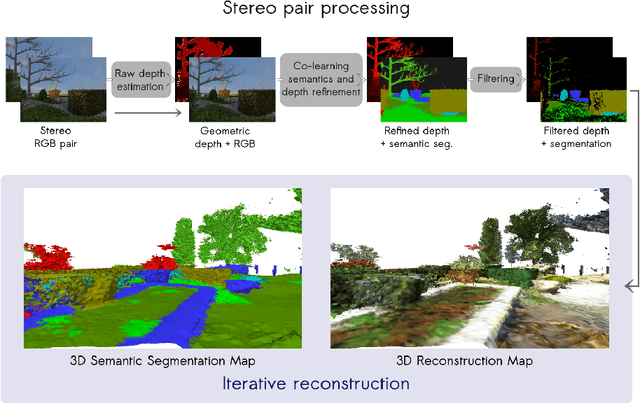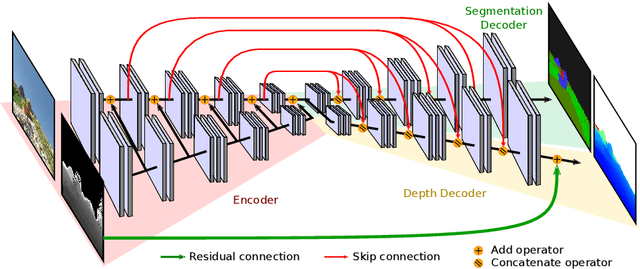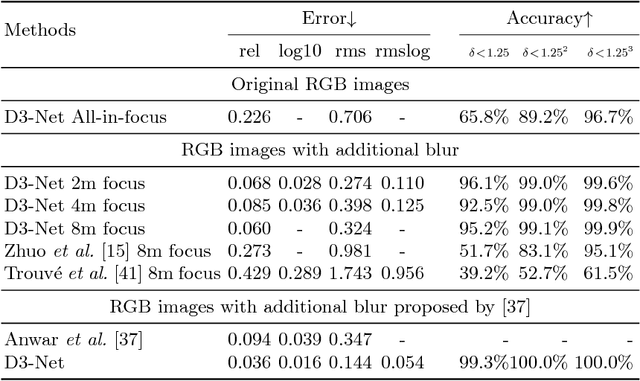Marcela Carvalho
On the Design of Privacy-Aware Cameras: a Study on Deep Neural Networks
Aug 24, 2022



Abstract:In spite of the legal advances in personal data protection, the issue of private data being misused by unauthorized entities is still of utmost importance. To prevent this, Privacy by Design is often proposed as a solution for data protection. In this paper, the effect of camera distortions is studied using Deep Learning techniques commonly used to extract sensitive data. To do so, we simulate out-of-focus images corresponding to a realistic conventional camera with fixed focal length, aperture, and focus, as well as grayscale images coming from a monochrome camera. We then prove, through an experimental study, that we can build a privacy-aware camera that cannot extract personal information such as license plate numbers. At the same time, we ensure that useful non-sensitive data can still be extracted from distorted images. Code is available at https://github.com/upciti/privacy-by-design-semseg .
Pix2Point: Learning Outdoor 3D Using Sparse Point Clouds and Optimal Transport
Jul 30, 2021


Abstract:Good quality reconstruction and comprehension of a scene rely on 3D estimation methods. The 3D information was usually obtained from images by stereo-photogrammetry, but deep learning has recently provided us with excellent results for monocular depth estimation. Building up a sufficiently large and rich training dataset to achieve these results requires onerous processing. In this paper, we address the problem of learning outdoor 3D point cloud from monocular data using a sparse ground-truth dataset. We propose Pix2Point, a deep learning-based approach for monocular 3D point cloud prediction, able to deal with complete and challenging outdoor scenes. Our method relies on a 2D-3D hybrid neural network architecture, and a supervised end-to-end minimisation of an optimal transport divergence between point clouds. We show that, when trained on sparse point clouds, our simple promising approach achieves a better coverage of 3D outdoor scenes than efficient monocular depth methods.
Multi-Task Learning of Height and Semantics from Aerial Images
Nov 18, 2019



Abstract:Aerial or satellite imagery is a great source for land surface analysis, which might yield land use maps or elevation models. In this investigation, we present a neural network framework for learning semantics and local height together. We show how this joint multi-task learning benefits to each task on the large dataset of the 2018 Data Fusion Contest. Moreover, our framework also yields an uncertainty map which allows assessing the prediction of the model. Code is available at https://github.com/marcelampc/mtl_aerial_images .
Technical Report: Co-learning of geometry and semantics for online 3D mapping
Nov 04, 2019



Abstract:This paper is a technical report about our submission for the ECCV 2018 3DRMS Workshop Challenge on Semantic 3D Reconstruction \cite{Tylecek2018rms}. In this paper, we address 3D semantic reconstruction for autonomous navigation using co-learning of depth map and semantic segmentation. The core of our pipeline is a deep multi-task neural network which tightly refines depth and also produces accurate semantic segmentation maps. Its inputs are an image and a raw depth map produced from a pair of images by standard stereo vision. The resulting semantic 3D point clouds are then merged in order to create a consistent 3D mesh, in turn used to produce dense semantic 3D reconstruction maps. The performances of each step of the proposed method are evaluated on the dataset and multiple tasks of the 3DRMS Challenge, and repeatedly surpass state-of-the-art approaches.
Deep Depth from Defocus: how can defocus blur improve 3D estimation using dense neural networks?
Sep 06, 2018



Abstract:Depth estimation is of critical interest for scene understanding and accurate 3D reconstruction. Most recent approaches in depth estimation with deep learning exploit geometrical structures of standard sharp images to predict corresponding depth maps. However, cameras can also produce images with defocus blur depending on the depth of the objects and camera settings. Hence, these features may represent an important hint for learning to predict depth. In this paper, we propose a full system for single-image depth prediction in the wild using depth-from-defocus and neural networks. We carry out thorough experiments to test deep convolutional networks on real and simulated defocused images using a realistic model of blur variation with respect to depth. We also investigate the influence of blur on depth prediction observing model uncertainty with a Bayesian neural network approach. From these studies, we show that out-of-focus blur greatly improves the depth-prediction network performances. Furthermore, we transfer the ability learned on a synthetic, indoor dataset to real, indoor and outdoor images. For this purpose, we present a new dataset containing real all-focus and defocused images from a Digital Single-Lens Reflex (DSLR) camera, paired with ground truth depth maps obtained with an active 3D sensor for indoor scenes. The proposed approach is successfully validated on both this new dataset and standard ones as NYUv2 or Depth-in-the-Wild. Code and new datasets are available at https://github.com/marcelampc/d3net_depth_estimation
 Add to Chrome
Add to Chrome Add to Firefox
Add to Firefox Add to Edge
Add to Edge